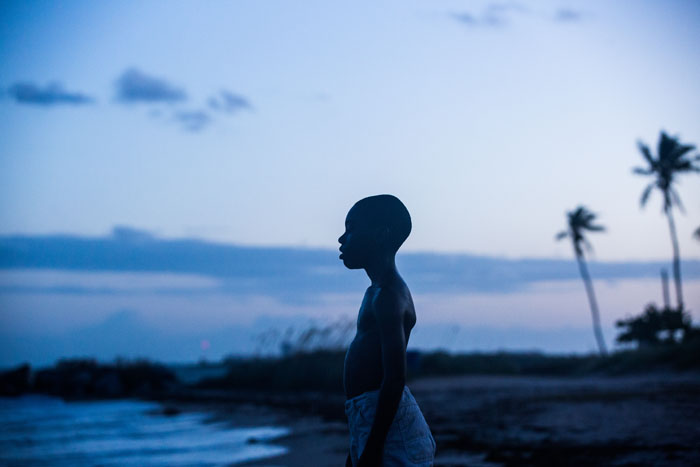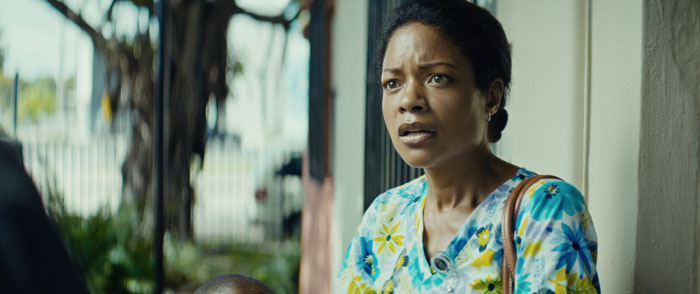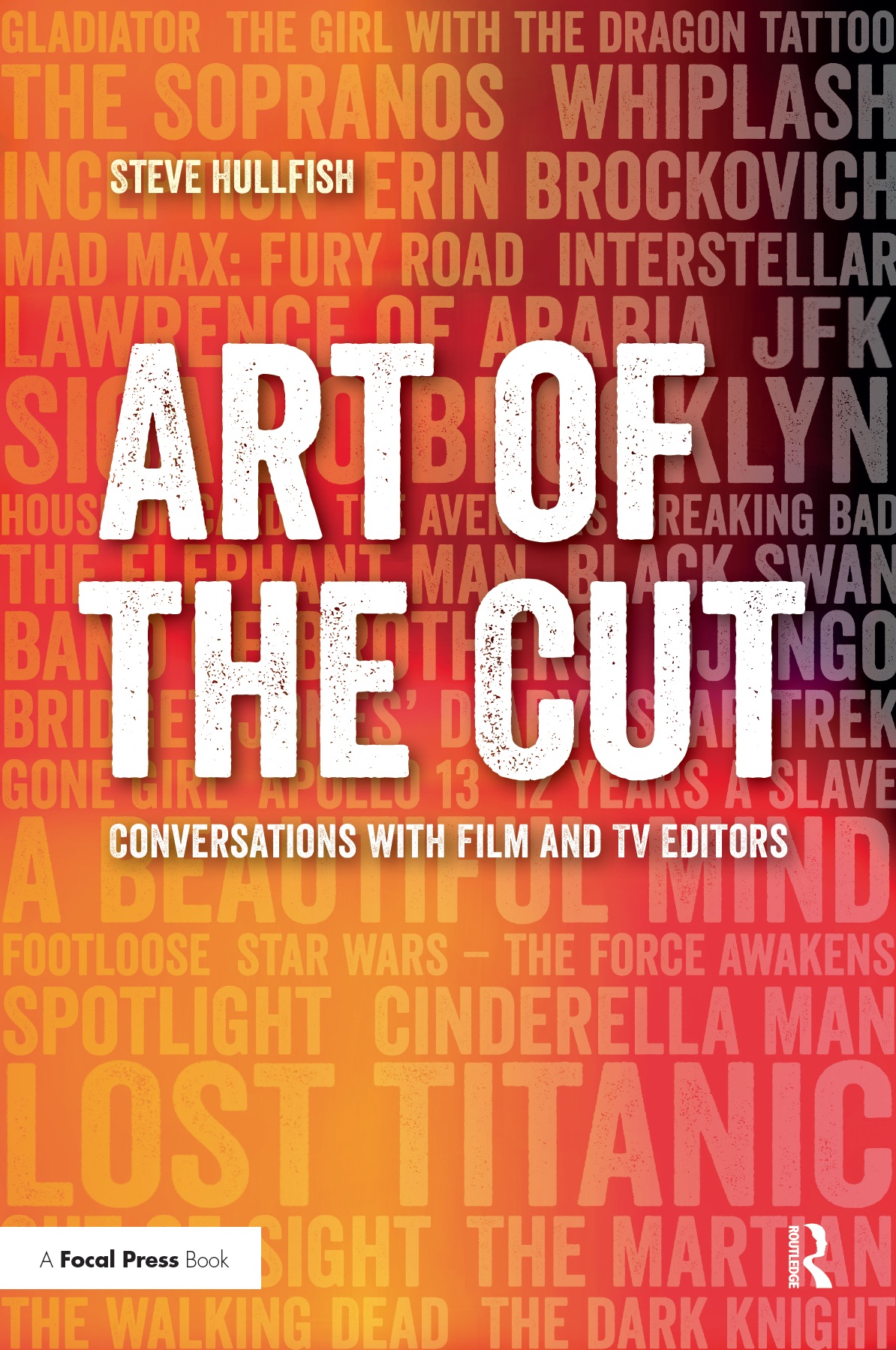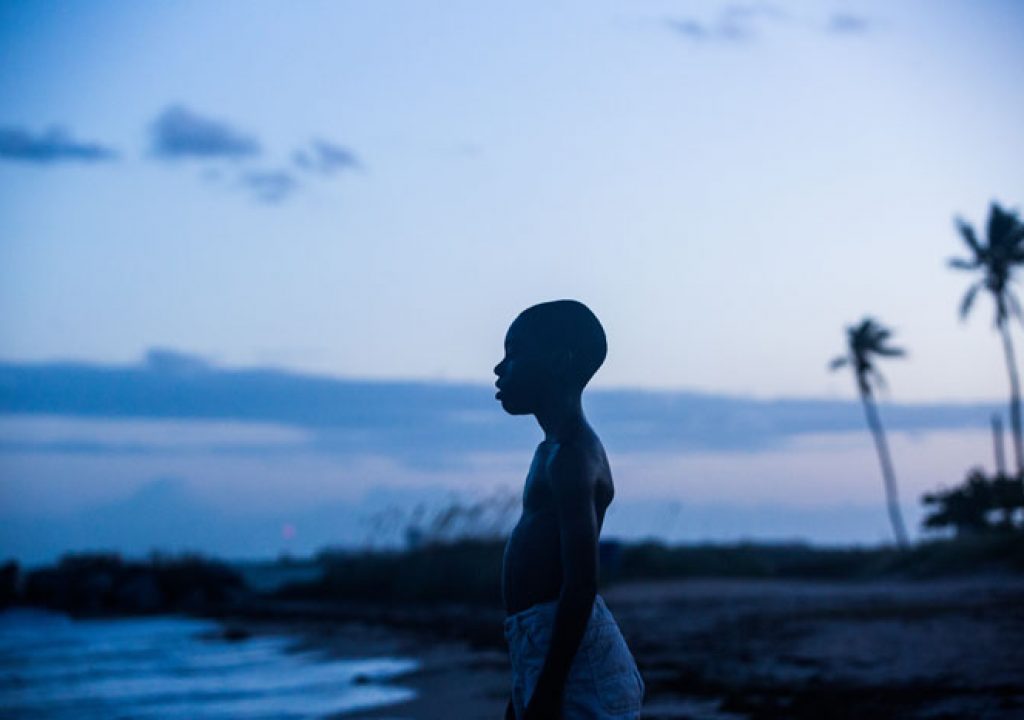Today Art of the Cut speaks with Joi McMillon who was recently nominated for an Oscar for Best Editing for the film Moonlight which she co-edited with Nat Sanders. Her previous experience includes editing the TV show Girls and several short films, including one for the director of Moonlight, called Chlorophyl.

HULLFISH: When was principal photography and what was the rest of the schedule?
MCMILLON: Principal photography started mid-October of 2015 and it was a 25-day shoot in Miami that ended around Thanksgiving. We officially wrapped editing on Moonlight in early April of 2016.
HULLFISH: And you co-edited this with Nat Sanders?
MCMILLON: Yes.
HULLFISH: And he’s somebody that you’d worked with on previous shows and, tell me a little about your relationship and what it’s like to edit with another editor.
MCMILLON: Nat and I worked with Barry on his earlier projects. Nat was the editor of Barry’s first film Medicine for Melancholy and I worked with Barry on a short called Chlorophyl. Given these experiences, coupled with knowing Barry for quite some time, we had an understanding of Barry’s cinematic style and how he likes to approach his films. Collaborating with him in editorial didn’t really feel like work, it was more like hanging out with good friends. Our editing room on this project had us in very close quarters with me working on one side of the office and Nat on the other. Thus, providing Barry with the opportunity to bounce back and forth between the two of us while working on different scenes from the movie. At certain points Barry and Nat would be working on a section of the film and then say “Hey Joi turn around and look at this” and then vice versa; when Barry was working with me he’d say, “Hey Nat, how do you feel about this?” It definitely was a close collaboration and I think because we respect each other so much it was a very honest and open relationship where no one felt like they couldn’t say anything. We felt as though we could definitely voice our opinions and they would be heard.
HULLFISH: That’s great. You mentioned that you had known the director before. What was that collaboration like?
MCMILLON: Nat and I worked with Barry on his earlier projects. Nat was the editor of Barry’s first film Medicine for Melancholy and I worked with Barry on a short called Chlorophyl. Through these experiences coupled with knowing Barry for quite some time, gave us the understanding of Barry’s cinematic style and how he likes to approach his films. Collaborating with him in editorial didn’t really feel like work, it was more like hanging out with good friends. Our editing room on this project had us in very close quarters with me working on one side of the office and Nat on the other. Thus, providing Barry with the opportunity to bounce back and forth between the two of us while working on different scenes from the movie. At certain points Barry and Nat would be working on a section of the film and then say “Hey Joi turn around and look at this” and then vice versa; when Barry was working with me he’d say, “Hey Nat, how do you feel about this?” It definitely was a close collaboration and I think because we respect each other so much it was a very honest and open relationship where no one felt like they couldn’t say anything. We felt as though we could definitely voice our opinions and they would be heard.
HULLFISH: That’s nice. One of those things that I’ve talked to so many people about is honesty and trust in the editing room.

MCMILLON: Yes definitely.
HULLFISH: To talk about some specifics about editing “Moonlight:” If the script for this movie was just the dialogue, I’m not sure it would be 15 pages long, maybe 20.
MCMILLON: (laughs)
HULLFISH: Is there a difficulty in editing dialogue scenes with so little dialogue?
MCMILLON: It can be challenging, for instance in the first 7-10 minutes of the film the character, Little, doesn’t speak and Juan is trying to get him to talk. Therefore one of our initial fears was, “Is the audience going to be engaged enough to follow this one character throughout these three different stories?” Yet there was just something in Alex Hibbert’s eyes that – I feel like – the moment you see him, you feel like you want to protect him and you want to provide for him. Even though he wasn’t speaking, I still feel like he was presented in a way that engaged the audience. When cutting a scene without dialogue, as an editor, you have to rely on the actor’s performance through expressions to be an anchor for the audience to grab on to and remain engaged.
HULLFISH: Absolutely. Tell me a little about the temp music or what you temped with underneath the swimming scene?
MCMILLON: Barry definitely had an idea of how he wanted certain scenes to feel so he did have some score pieces in mind for us to use as temp. For the swimming scene, it was the song Go in a Good Way to a Better Place by Eyvind Kang. That temp score was one of Barry’s favorites but in the end Nick created the perfect piece for this scene.
HULLFISH: When I talked to Thelma Schoonmaker, she said all of the “temp” made it in the film. On that movie, there was no such thing as temp. Zero temp. It’s just “This is the cut. We’re going to license it.”
There’s that danger of “temp lock,” right? … Of loving a piece that you’ve cut in and listened to so many times that nobody is really happy with anything else, but it sounds like you guys got past that.
MCMILLON: Oh yeah, Nick did an amazing job. He definitely found the essence of the movie and was able to translate it into the score.
 HULLFISH: I gotta admit that I got lost on a scene in the movie. There’s like a school dance scene where they’re like in school learning to dance in front of a big mirror and then right after that there’s a scene Chiron goes through a door and a bunch of kids say, “I thought that door was locked.” What was that scene? Because I couldn’t really figure out what that was there for.
HULLFISH: I gotta admit that I got lost on a scene in the movie. There’s like a school dance scene where they’re like in school learning to dance in front of a big mirror and then right after that there’s a scene Chiron goes through a door and a bunch of kids say, “I thought that door was locked.” What was that scene? Because I couldn’t really figure out what that was there for.
MCMILLON: (laughs) What that scene is about is – being a female I didn’t know that boys did this but – basically the little boys were all comparing their private parts.
HULLFISH: Wow. (laughs) I totally didn’t get that.
MCMILLON: Yeah, it’s super subtle and we did try to enhance the zipper sound so people knew exactly what was going on.
HULLFISH: I missed the zipper sounds. I saw everybody looking down and I was trying to figure out what was going on. Now it makes much more sense. So that brings up an interesting topic. The cultural background of films editors and how they affect an editor. So you said you you weren’t aware that boys compared private parts in that scene. But most of the film is about black people, so did that help you as an African American? I’ve cut scenes with all African-American casts. Hughes Winborne – a white guy – cut “Fences” and many other African-American movies. Does it matter?
MCMILLON: As an editor by trade you are a storyteller and should possess the ability to tell all stories. I think what truly matters is the origin of the material. Barry and Tarell both understand this world; know these characters really well, which enables them to provide us with a story that was rooted in truthfulness. When you’re telling a story, there needs to be room for emotional beats that allow the audience to connect with the character. With a female perspective in the cutting room, you can shine a light on some of these sensitive moments that people feel like are unnecessary. I’ve had to fight for scenes that sometimes people feel like aren’t crucial for the storytelling. I’m like, “Trust me, this particular story point and this particular beat is going to only enhance the story that you’re trying to tell.” I know in some cutting rooms females are minimal, but when we are a part of the storytelling I feel like it’s for the better. I may be a little biased on that, but you know.
HULLFISH: I worked for Oprah for 10 years with a lot of female editors on the team, so I get it. It was a great group of editors and a large percentage of them were women.
There’s a great cut that I wanted to talk to you about in the scene between the mom smoking crack in the car and then there’s this hard cut to a staring contest essentially between the mom and Chiron in their apartment do you remember that?

MCMILLON: I remember, well. That was a section that Nat cut, but I do remember seeing that for the first time and just being like “That’s so powerful!” And the choice of not being able to hear what she says and then later coming back to that in act three was so clever. Even though you didn’t get to hear what she was saying that look that Little is giving you is just so crushing.
HULLFISH: That’s one of those classic juxtapositions, right?
Tell me a little about those chapter breaks. They’re two different things. There’s a chapter break and there’s a chapter name, why did you not put together, you know what I’m saying? There’s a hard cut to black at the end of each one of the age jumps from child to high-schooler to man with some flashing lights and then a few seconds later, a minute later then there’s the chapter name.
MCMILLON: Yes, it’s a tribute to how Barry wanted to tell the story and he was very specific about the chapter’s titles, where they would break, and how he wanted them to start back up. What we were trying to do with the audience is just drop you into the story without any information at first. So you just get to experience Little, Chiron and then Black in their current worlds.
HULLFISH: Talk to me about the musical decision, the editorial decision of going down to Miami with a very soft kind of sensual piece of music as he drives down and then there’s this cut to the parking lot with some really hard music and then a minute later we’re back to soft music.
MCMILLON: Barry had a playlist of songs he wanted featured in the film and some of the songs were actually written into the script. When we were first assembling the movie we generally knew what type of song that was supposed to play in each area. Barry struck a fine balance between selecting songs that set the mood of the scene, and featuring songs that reflected the world that these characters are a part of. By having Caetano Veloso’s Cucurrucucu Paloma crash right into Jidenna’s Classic Man (chopped and screwed) heightened the beauty of a moment, while keeping it grounded in reality.

HULLFISH: One of the other things – it happens twice that I remember in the movie – the decision to have non-sync sound on a close-up during dialogue. It happens with the mom and once with Kevin when they first meet at the diner and it’s like a slow-mo shot of Kevin in a close up, but he says Chiron’s name and then the mom does the same thing when he spends the night and she doesn’t know where he’s been and she’s like “Where were you” and it’s non-synced. Why, what was that decision?
MCMILLON: Barry wanted certain moments in the film to have a powerful impact on the audience. When we as individuals reflect on pivotal points in our lives it does feel like time stopped or slowed down. The moments we choose to do this in the film are at times very evident and other times really subtle. Our goal was to immerse you into Chiron’s point of view and allow the audience to experience these moments how Chiron would have perceived them. Be it Chiron realizing his mom is high or a glance from a long time friend, we wanted the audience to really feel the weight of these moments and their impact on Chiron.
Hullfish: Thank you so much for taking time to speak with me, Joi. Congratulations to you and Nat on your Oscar nomination.
 MCMILLON: My pleasure. Thank you.
MCMILLON: My pleasure. Thank you.
To read more interviews in the Art of the Cut series, check out THIS LINK and follow me on Twitter @stevehullfish
The first 50 interviews in the Art of the Cut series were curated into a book, organizing the thoughts, opinions and wisdom of some of the top editors in the world – of the biggest and best TV shows and feature films – into a virtual roundtable discussing topics including pacing, storytelling, structure, collaboration, documentary and approach to a scene. The book will be available March 10th.

Filmtools
Filmmakers go-to destination for pre-production, production & post production equipment!
Shop Now













